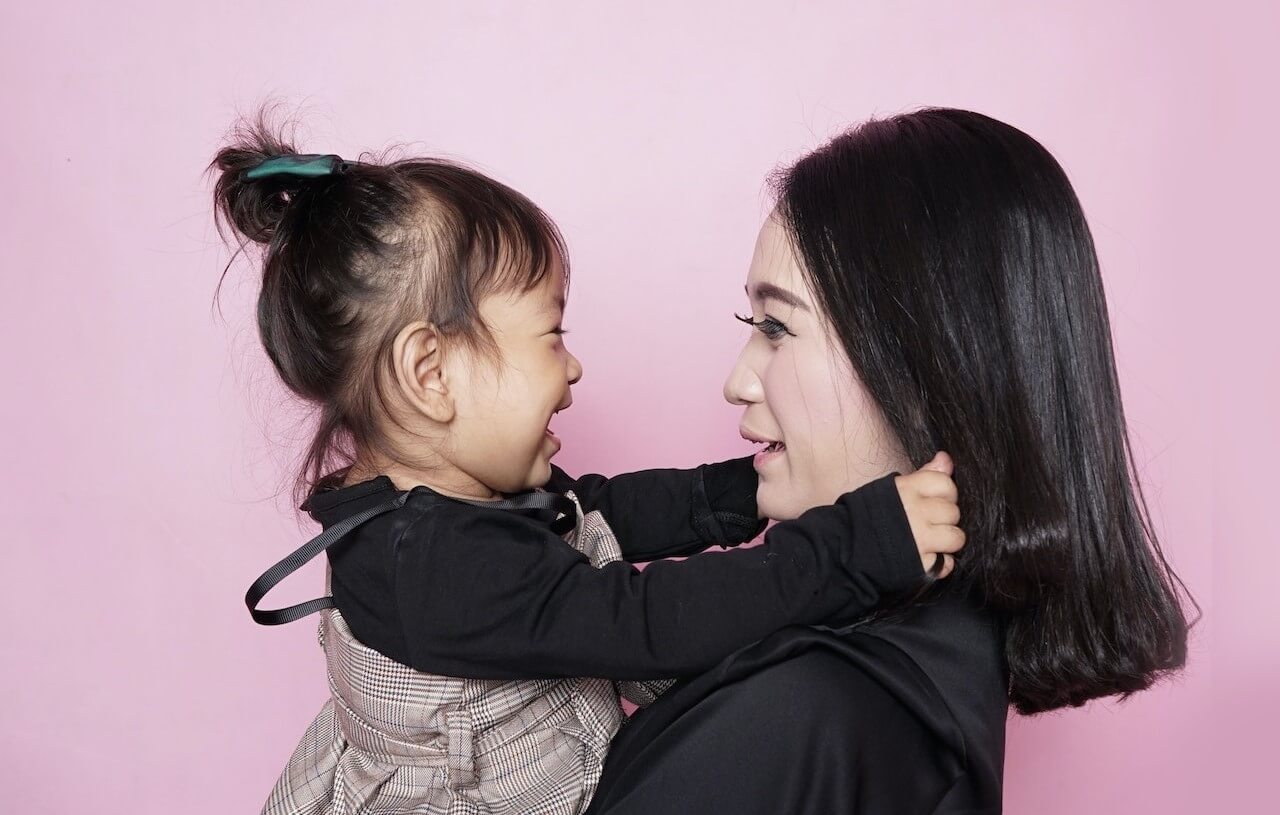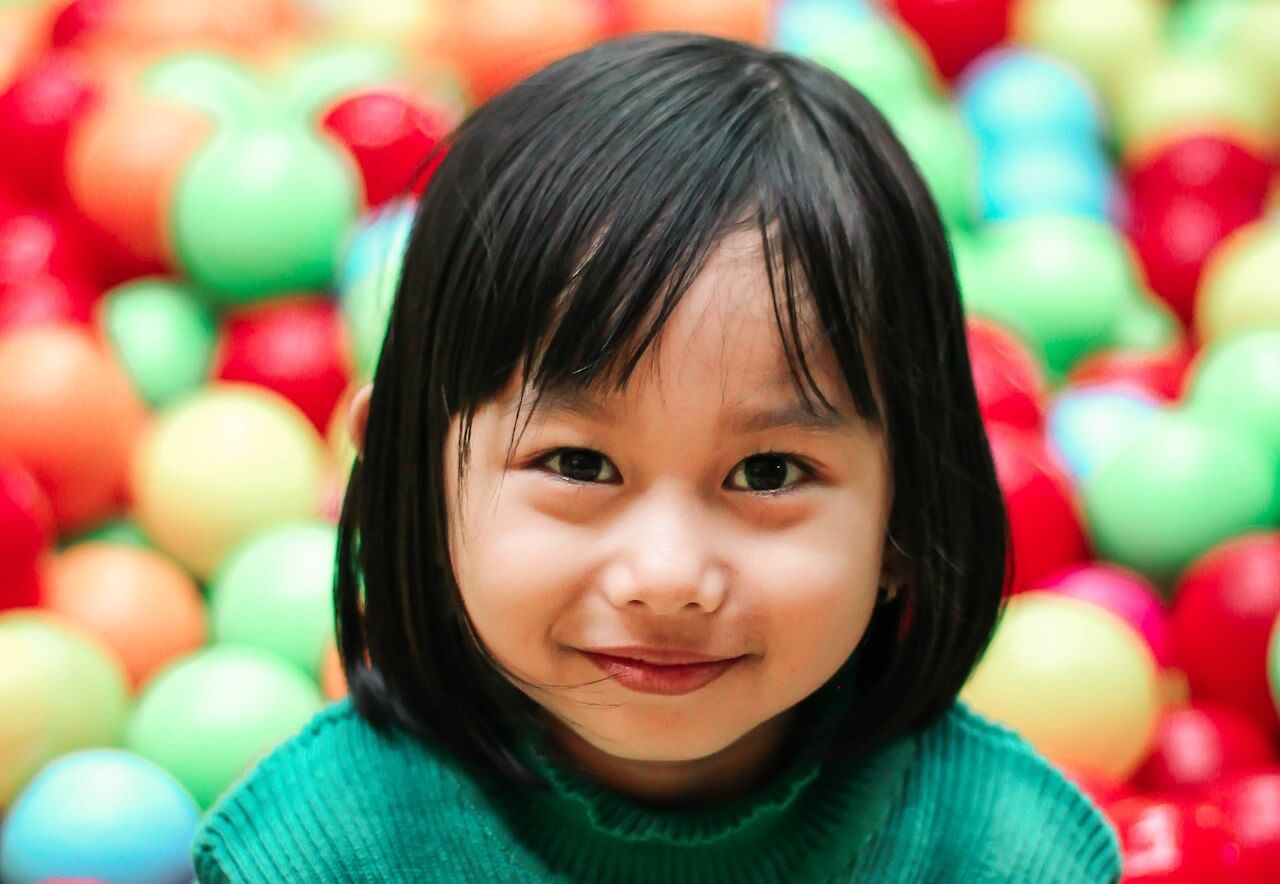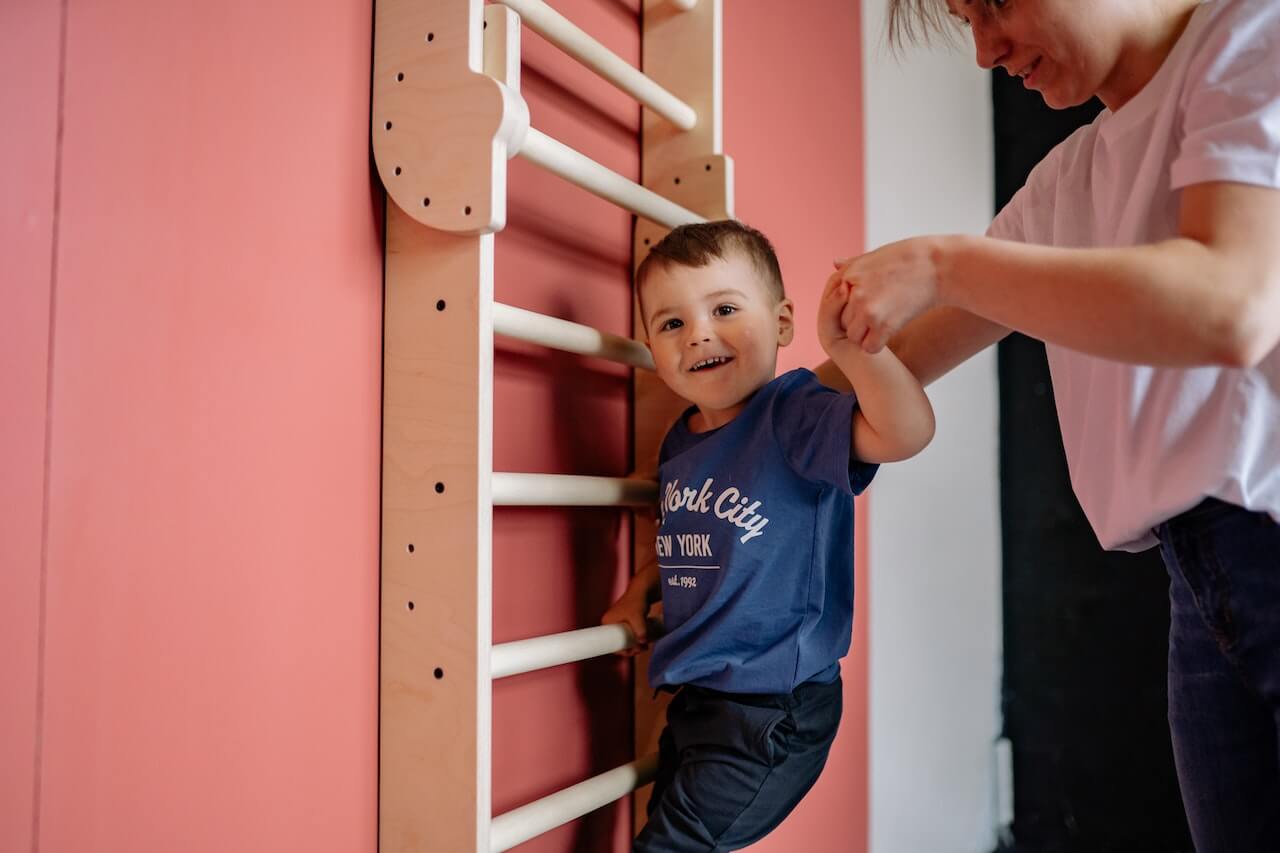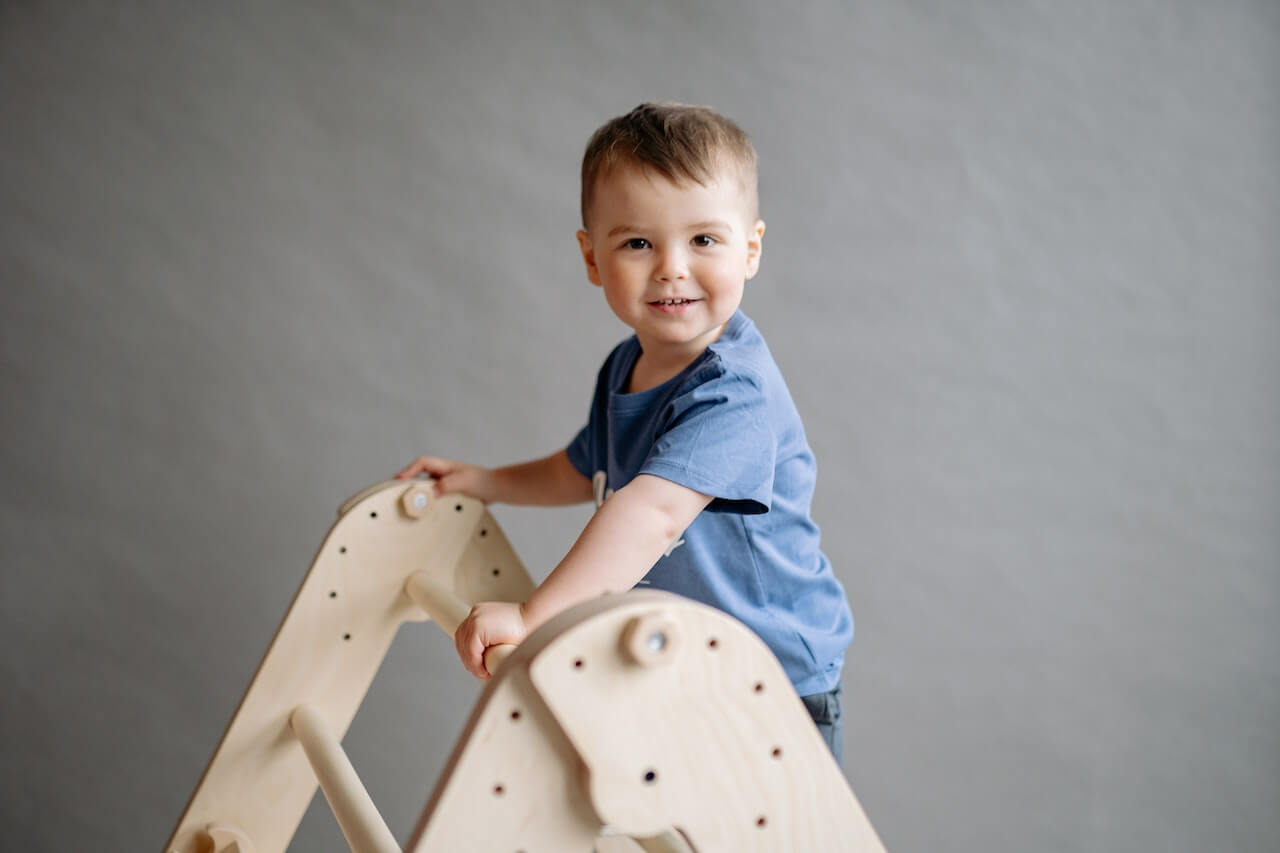Learning how to teach preschool gymnastics programs can help your gym attract new long-term gymnasts. But, the secret to success isn’t just about developing good programming. Running a successful preschool gymnastics program is also about telling a good story. This story details the benefits of children growing up in your gym. It’s about friendship, learning new skills, and developing confidence.
As providers of gymnastics software, we love studying and understanding what works for gymnastics clubs. So, we’ve done our research and put together these recommendations in an effort to help you build a strong foundation for your preschool gymnastics program.
In this article, we’ll outline how to provide programming that makes a positive impact on young children and caregivers. Plus, we’ll share tips about how to tell your story so that caregivers will bring their children back to your gym again and again.
Let’s jump in.
Understanding Caregiver Motivations
In order to tell a compelling story you need to ensure you understand your audience. So, let’s take a moment to understand a caregiver’s motivations when they register for preschool gymnastics. Although specific motivations may vary, most caregivers are looking for an activity that:
- helps socialize their child
- aids in the development of their child’s motor skills
- provides challenges and stimulation they can’t get at home
Of course, because caregivers themselves will be involved in class participation, they’ll also be seeking an environment that:
- is welcoming and understanding to the unique needs of caregivers with toddlers
- creates opportunities for caregivers to interact or socialize with each other
- provides moments of joy and laughter

Once you understand these motivations, you can design your preschool gymnastics experience to meet these needs. Of course, if your team comes up with additional motivations be sure your experience serves those needs as well.
How To Tell The Story of Preschool Gymnastics
Raising a child isn’t just about meeting their needs today, it’s also about setting children on the right path for a good future. So, in order to tell caregivers a story about the value of your club, you should speak to the longer-term benefits of your programming.
Below, we outline how you can tell this story through the use of apparatus, programming, social games and more.
Apparatus for Preschool Gymnastics
As we’ve already outlined, one of the motivations for caregivers enrolling in preschool gymnastics is to provide challenges and stimulation that their child can’t get at home. This means providing an engaging space with larger, more intricate equipment.
Simply providing a large space with hula-hoops, balls and foam rollers on the floor isn’t enough. Today, caregivers can purchase small inclines, low profile beams, soft rollers, and an array of mats online. So, make sure your gym offers something bigger and better.

Consider providing opportunities for toddlers to climb with climbing angle shapes or small climbing walls. Can you offer large pieces of equipment like preschool ball pits or foam pits? How about something else completely unique?
Of course, providing tactile experiences with balls, hula hoops and other simple gear can add value.
But, try and incorporate at least one piece of equipment that you can picture caregivers telling their friends about.
When caregivers see their child enjoying something unique, they’ll be sure to tell other parents about your offering. And those simple conversations can help attract even more new customers to your gym.
If toddlers aren’t big enough or can’t quite master a piece of equipment, remember to be motivational. Tell caregivers how their child will master it in the future and explain how your programming can help get them there.
Setting future goals for young gymnasts is a form of long-term story telling for your club. Most importantly, this simple act can prevent caregivers from feeling like your gym isn’t a good fit for their toddler’s abilities. Instead of feeling out of place, they’ll know that piece of equipment is something they can look forward to as their child grows.
How To Teach Preschool Gymnastics Skills That Matter
As any coach will tell you, preschool gymnastics is not daycare. For that reason, it shouldn’t be treated like a block of unstructured exploration time.
It’s good for kids to be able to explore, but your programming needs to incorporate movements with specific development goals as well. To help, coaches should understand some general development milestones and goals for preschool children.
The specifics of your preschool gymnastics programming will depend upon the capabilities of your space, equipment and coaching staff. However, the goals of your preschool gymnastics programming should connect to those development milestones of preschoolers.
Consider sitting down with your team and reviewing development milestones for children aged 12 – 36 months old. Then, begin crafting a list of movements that can help build strength, balance, flexibility and coordination to assist children in hitting those milestones.
For example: you may encourage foam block or foam stair climbing to help young children develop toward their 18 month climbing milestone. Or you may practice balancing movements to help children develop toward their 24 month kicking, running and stair walking milestones.
Once your programming incorporates these milestones, make sure you tell caregivers about it.
As you guide young toddlers through this programming, educate caregivers about why you chose this movement and how it can help. This helps communicates the longer-term value of your programming.

To take it one step further, consider explaining how the movements you’re teaching will graduate to movements their child can learn in gymnastics when they’re older.
You can also elaborate on how specific movements can aid in the development of a healthy and active childhood as they age. As we alluded to above, teasing out these details helps caregivers understand the positive impact your gym can have on the development of their child.
The Benefits of Socializing Kids in Preschool Gymnastics
Providing socializing opportunities for preschoolers and their caregivers can be one of the most rewarding parts of learning how to teach preschool gymnastics.
When young children socialize, they can begin to develop their first seeds of empathy, teamwork, and self-esteem. Providing a place for young ones to socialize in a structured environment, helps children and their caregivers feel a sense of belonging in a larger community.
What does socialization look like at preschool gymnastics?
Socialization can take the form of sharing equipment, playing games together, making new friends, or smiling and laughing as kids take on new challenges together.
Maintaining the Element of Surprise with Social Games
Just like your equipment and programming, socializing games and activities for preschoolers need to stay fresh and build toward new challenges. This means regularly introducing new activities or games. It also means gradually introducing more challenging or more complex activities as your program progresses.
By introducing new and exciting games and activities, you can also keep caregivers motivated to come to your next class. If your preschool programming includes the same activities over and over, it becomes easy for tired caregivers to skip classes thinking, “we’re just going to play the same things again, maybe I’ll go next week.”
Of course, keeping class-favorite activities in rotation is great! But, otherwise try and schedule your programming in such a way that caregivers are left wondering what activity they’ll do next week.
Furthermore, when your programming gradually introduces more challenging or complex games (within reason), caregivers get to see how their child has progressed over the course of your program. This can be a rewarding observation for caregivers, and can also simultaneously reinforce the long-term value of your instruction!

Finally, just like the rest of your programming, it’s good to keep caregivers thinking about what comes next. This can be accomplished by hinting at games young children can play at your gym when they graduate to your next program.
How To Teach Preschool Gymnastics Games With Caregivers
When scheduling your socializing games and activities be sure to aim for a balance in movement.
More than likely some of your caregivers will have been awake and caring for their toddlers at points throughout the night. For this reason, it could be tiring to schedule several games with a lot of movement for caregivers. So, consider alternating between games where caregivers are required to move around and games where caregivers can mostly stay stationary.
Even though you’re coaching to adults, make sure your coaches clearly communicate instructions for each game.
Clearly communicating instructions includes communicating what’s expected of both caregivers and children, along with any safety reminders that may be necessary. Your games will be simple but it’s always better to err on the side of caution, rather than needing to break out ice packs for a caregiver or toddler who didn’t grasp all the instructions.
Even though it may seem obvious, a simple reminder such as “Mr. Wolf is going to move slowly so that all our little friends can enjoy the game,” can be a great way to set expectations so that everyone can adjust their actions accordingly.
Ideas for social games to play with caregivers and children at preschool gymnastics:
- Simon Says
- Red Rover
- What Time Is It Mr. Wolf?
- Red Light, Green Light
- Over Under Beanbag Relay
- Freeze Dance
- Blob Tag
- Duck, Duck, Goose
- Please, Mr. Crocodile
- Patty Cake
- Going On A Lion Hunt
The Hidden Value of Play
Many young toddlers won’t grasp the rules or may not be able to fully participate in games, but don’t underestimate their value. It’s known that children get their cues and model their world from their caregivers.
This means when caregivers are engaged in play, laughing, singing and even letting out an excited shout or two, their toddlers benefit from the experience.
They learn that playing with others can be joyful and rewarding, and that your gym is a fun and welcoming space.
Providing Hands-on Support for Caregivers
It’s important to remember that some caregivers are on their own outside the gym. This means that lending a helping hand inside the gym can go a long way.
Simply asking for permission and then guiding a child a few steps away from their caregiver to walk across a low-profile balance beam, can be an experience that caregivers will remember for a long time. A simple act like this provides caregivers with an opportunity to see their child complete a movement independent of their care, something they may have never seen before! Plus, it gives parents a clear signal that your gym is there to help support them and their child.
Have Advice About How To Teach Preschool Gymnastics?
Do you think we missed any helpful tips about how to teach preschool gymnastics? Let us know! We love hearing from gymnastics clubs, schools and coaches.
Feel free to get in touch at info@uplifterinc.com, or message us on Twitter, Facebook or Instagram.









